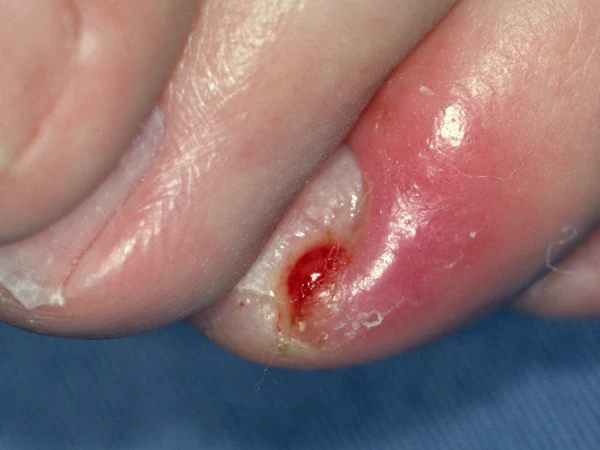Published on
Differential Diagnosis
- Cutaneous metastases
- Drug-induced paronychia
- Felon
- Cellulitis

Diagnosis
This patient was diagnosed with drug-induced paronychia. Acute paronychia occurs rapidly and is associated with redness, pain, and, in the case of infection, purulent drainage. Chronic paronychia lasts for more than 6 weeks and is associated with erythema, loss of the cuticle, and often nail dystrophy.
Learnings and What to Look for
- Paronychia is inflammation of the nail folds
- Generally, acute paronychia is due to infectious etiologies, while chronic paronychia is typically due to irritants
- Drug-induced paronychia correlates with the introduction of the drug. Potential culprits include retinoids, lamivudine, cyclosporine, indinavir, azidothymidine (AZT), cephalexin, sulfonamides, cetuximab, gefitinib, fluorouracil (5FU), methotrexate, vandetanib, capecitabine, doxorubicin, and docetaxel
Pearls for Urgent Care Management
- Drug-induced paronychia typically resolves once the medication is discontinued
- Patients may soak the infected finger(s) in warm water at least 15 minutes daily, and dry the area thoroughly after
- Infectious paronychia can be treated with incision and drainage and/or topical antibiotics
- Chronic paronychia may be treated with topical steroids
Acknowledgment: Image and case presented by VisualDx (www.VisualDx.com/jucm).
A 59-Year-Old with a Painful Finger Skin Lesion
1 2
